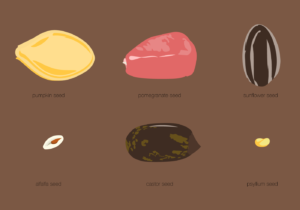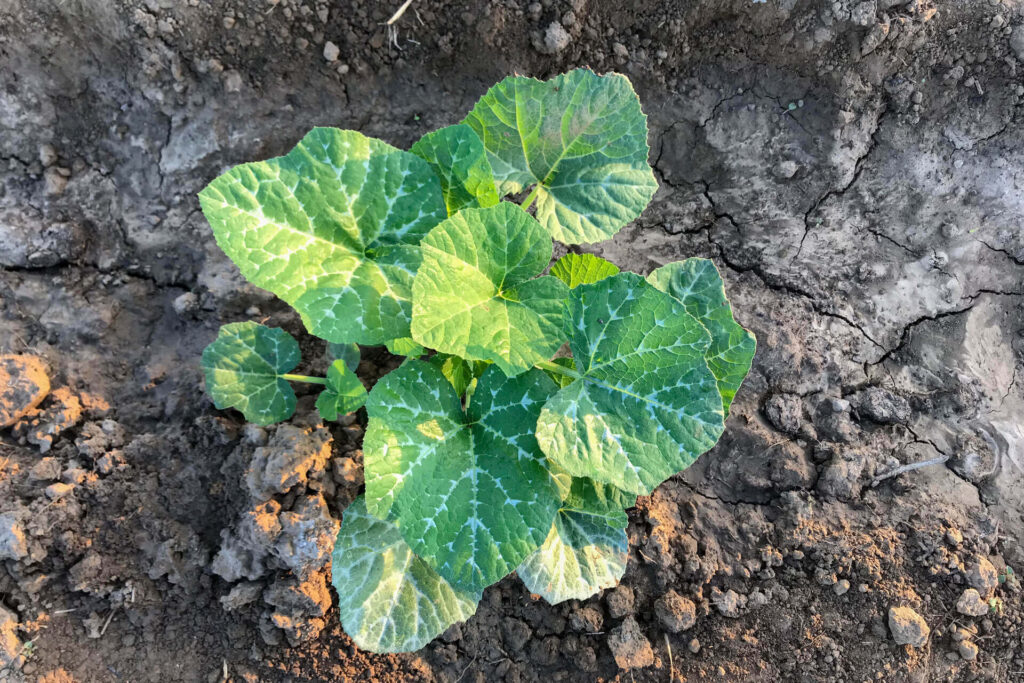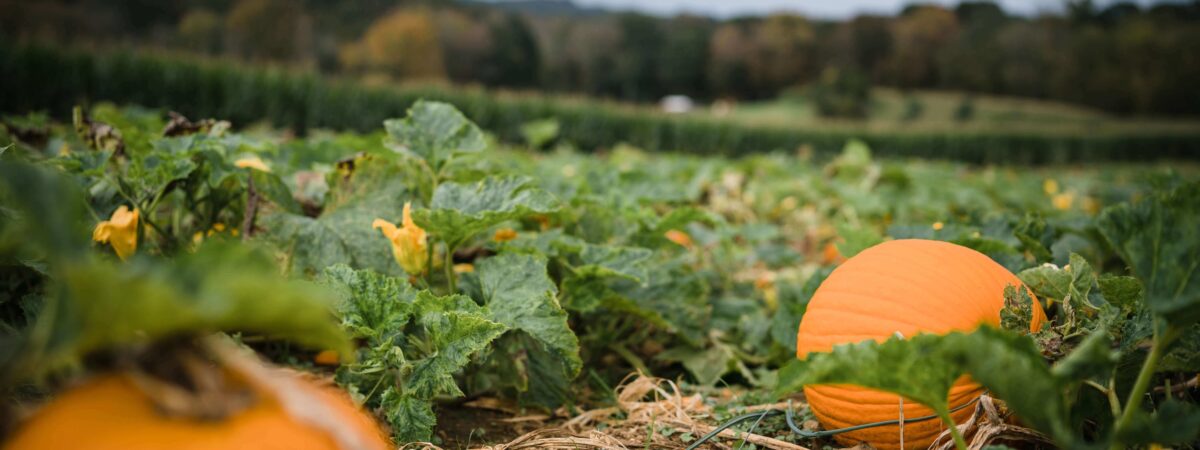If there is one vegetable that you can grow in your backyard, make delicious sweet dishes out of it, use it as ornamental decoration on Halloween and Thanksgiving, that has to be pumpkin. Pumpkins are also rich in nutrition. Pumpkin seeds are delicious and can be an excellent nutritious snack choice.
This guide is for you if you want to learn how you can plant, grow and harvest pumpkins in your own backyard. We will also share expert tips on how to protect your pumpkins from potential pests and diseases.
Read on to find out everything about growing pumpkins.
History of Pumpkins
You will be surprised to know that pumpkins have been grown in North America for more than 5000 years now. The word pumpkin comes from the Greek word “peopon”, the English meaning of which is large melon. Americans started calling it Pumpkin and being a native American vegetable; it is still called by this name.
Apart from America, pumpkins have been grown widely across Mexico and a few South American Countries.
Back in the day, it is believed that some native American tribes used to dry the pumpkin stripes and used to make mats out of those.
Today pumpkins are still grown as a food crop, but it is still widely used for decorative purposes during Halloween and Thanksgiving celebrations.

How to grow pumpkins
Now that you have a fair idea about the history of pumpkins, let’s find out how you can grow this vegetable in your own backyard. Pumpkins need space to grow for a sprawling vine. The vine grows more than 25 feet in length. So you need to choose a space where the plants can grow freely.
But if you have limited space, do not worry. There are smaller varieties of pumpkins that do not need much space. They do not need more than 5, 6 to 8 feet of space. They can be used both for consumption as well as decoration purposes.
You can also grow pumpkins in a bucket of 5 to 10 gallons, and still, you will do fine growing a healthy plant.

Where to plant pumpkins
Pumpkins grow best when seeds are planted directly to the ground. Pumpkin plants are very sensitive to cold. So make sure the soil is warm enough before planting the seeds to the ground. Soil temperature should be about 70-90 degrees Fahrenheit. Choose a place that gets sunlight throughout the day.
Pumpkins have a relatively long growing season. So you need to make sure that the soil is warm enough through the growing season, and there is not much worry about the frost.
If you believe you might encounter a dip in soil temperature when the plant is still in the growing phase, you should start growing it indoors and transplant it outside when the temperature reaches the recommended level.
How to plant pumpkins
Always plant pumpkins on a small mound-like structure that resembles a hill. The soil on those hills will warm quicker than flat grounds. Also, the water drains faster and does not make the soil soggy, which helps to germinate the seeds faster.

You need to prepare the soil hills by mixing it with manure well in advance. You need to plant the seeds about 1 inch deep into the ground and about 5 to 6 seeds per hill.
There should be enough space between the hills to let the vines grow freely; ideally, the space should be at least 7-8 inches.
The seeds usually germinate within 1-2 weeks if the soil temperature is ideal and 70-90 degrees F. The plants start to emerge about 5-10 days post that.
Once the plants have emerged and are about 3 inches tall, limit the plants per hill to 3-4 and sniff off the remaining unwanted plants.
How to take care of pumpkin plants
Pumpkin plants are heavy feeders, so you need to feed them adequately to let them grow properly. You can mix manure and compost and use it in soil regularly.

Alternatively, organic fertilizers can also be used regularly to foster growth. Fertilizers high in nitrogen are best suited during the early growth phase. Phosphorus-rich fertilizers can be of immense benefit when used before the blooming begins.
Pumpkin plants need a lot of water, so always keep the plants hydrated. Water deeply about 1 inch each week. Always keep the foliage and fruits dry to avoid damage and diseases that might set in. Do not overwater as it might lead to root rot as well.
You can use mulch around the plant to prevent pests and weeds and to retain moisture.
If you do not see fruits for an extended period, you might also need hand pollination. You can also attract bees by placing a bee-house, and that will expedite the pollination process.
Once the fruit starts to grow, you can turn it to give it an even shape but make sure you do not damage the vine and the fruit itself.
Once the fruit ripens enough, keep cardboard under it to prevent any damage to the fruit as well as keep the insects at bay.
Pumpkin vines are quite delicate, so make sure that you do not damage the vine, leading to poor-quality fruit.
Pests and diseases
Like many other plants, pumpkin plants are also prone to a few pests and diseases. The most common pest that attacks pumpkin plants is cucumber beetles and squash bugs. They love to feed on the foliage.
Other pests and diseases like aphids, squash vine borer, powdery mildew also affect the pumpkin plants.
To keep pests at bay, plant companion plants like onions.
How to harvest pumpkins
The best time to harvest the pumpkin is when they are ripened and fully matured. You will know a pumpkin is ripe when the color is deep enough and solid.
Another way to test if the pumpkin is ripe or not is to press your nail into the skin of the pumpkin and if there is any resistance, you will know the pumpkin has ripened.
Harvest the pumpkins before the heavy frost season to avoid any damage to the fruits. Use pruning shears to cut the pumpkin a few inches from where it is attached to the stem to increase the keeping time and also to prevent decay.
After harvesting, handle the pumpkins with care as they might get damaged or bruised.
Health benefits of pumpkin leaves
When you grow pumpkin in your backyard, you not only get to enjoy the pumpkins but also get immense health benefits by consuming pumpkin leaves.

Here are a few health benefits you can derive from consuming pumpkin leaves.
Pumpkin leaves are loaded with iron, manganese, calcium as well as several vitamins such as vitamin A, B, C. They also contain magnesium, phosphorus, and copper.
- Boosts immune system. Being iron-rich, pumpkin leaves provide strength to the immune system of the human body.
- Take care of heart health. When consumed, the high percentage of soluble fiber in the pumpkin leaves helps to reduce the absorption of bile acid and cholesterol from the small intestines, which helps control the cholesterol level. By lowering blood cholesterol levels, it decreases the risk of heart disease.
- For glowing skin. Vitamin A in pumpkin leaves helps keep the body free from free radicals and toxins that might harm your skin. It also helps in moisture retention, which prevents skin disorders like psoriasis.
- Fight against colon cancer. Researches have shown a direct link between increased fiber intake and decreased colon cancer. Like any other fiber-rich leafy greens, pumpkin leaves also help in preventing colon cancer.
- Bone strength. Pumpkin leaves contain a high percentage of calcium and phosphorus that are essential for strong bones and teeth.
Conclusion
By now, you must be all set to grow pumpkins in your own backyard. Choose which types of pumpkins you want to grow. Almost all varieties of pumpkins are edible, but they differ in taste.
You can also use pumpkins for carvings and decorating during Halloween and Thanksgiving. Pumpkins are also excellent for Jack-o-Lanterns. You can also inscribe your message on a growing pumpkin, and it will still be visible when harvested.
Pumpkin growing guide will set you on the right path to grow pumpkins in your own backyard.






